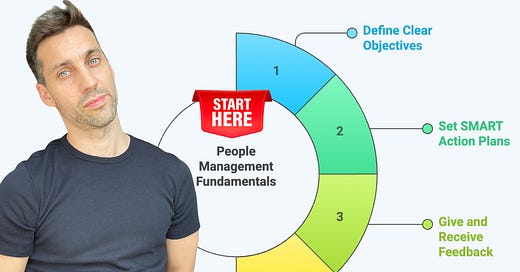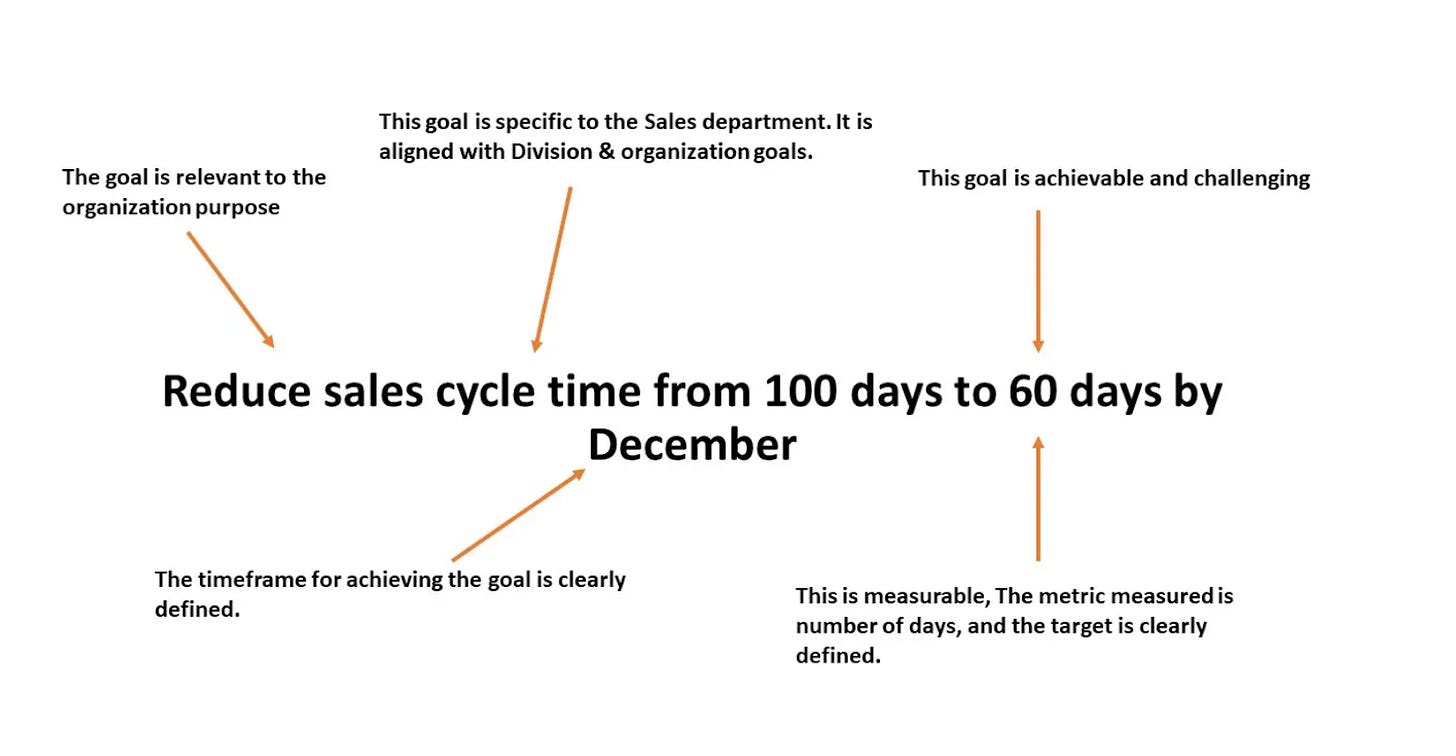How to prepare your managers to manage (Part 1)
Start with management basics, not leadership fluff
Too often, companies believe that enrolling managers in splashy “leadership” workshops will solve every people-issue.
We have assessed hundreds of managers through Huneety Learning.
The verdict : Companies have sent managers to leadership programs but they do not struggle with the basics. For sure the post training results of the leadership class was positive : participants enjoyed interacting with each other, understanding their personality types, and their style of management. Managers had a great time, the post survey results is very positive and they will definitely do it again!
But in the meantime, before and after.
Managers don’t set clear goals. They struggle to implement one-on-one conversations with their direct subordinates. They avoid tough feedback, there is no development plan set for the team. When it comes to quarterly, Mid year and yearly reviews, it is hard to see factual evidence to support promotions (or terminations).
My point of view is that the color-coded personality quizzes in leadership coaching sessions do not fix that.
“Sending a manager to a fancy training without teaching them how to set a good goal is like giving someone a sports car without teaching them to drive.”
I am not saying it is useless to send managers to disruptive leadership classes. It is usefull once the fundamentals of effective people management have been laid out across the company. In conclusion, we should start with the fundamentals of people management before upscaling efforts to more conceptual forms of learning.
Otherwise HR will still chase the same recurring comment : Where is the ROI of our management and leadership programs?
You see my point.
Today, let’s focus on four core duties every manager must master before chasing the next big leadership fad.
Here is how to implement the fundamentals of People management, that I like to call the “Manager toolbox”.
The Manager toolbox
I. Setting clear objectives for your teams : “The what”
a) KPIs
common pitfalls. Managers write goals like “Improve engagement” or “Grow sales” then wonder why no one knows what to do next. It is not rocket science, everyone would think “we know what is SMART come on”. What matters here is the implementation.
good vs. bad SMART objective.
Bad: “Reduce time to sales”
Good : Reduce sales cycle time from 100 days to 60 days by December
What is SMART?
Specific: define exactly what you want.
Measurable: include numbers or clear checkpoints.
Achievable: set realistic targets.
Relevant: tie to business priorities.
Time-bound: include deadlines.
I wrote an article on SMART goals, clear here to read more.
Tips to convert vague goals into SMART.
Ask “how many?” and “by when?”
Tie every goal to a metric or deliverable.
Confirm it aligns with your company’s key results.
🤔 Kpi vs. Okr: what is the difference?
This is a lot of jargon. In the mind of a manager, this is pretty much the same. And rightly so. I don't think energy should be spent on whether “KPI” or “OKR” should be chosen over the other. Here’s how you can explain it without giving them a migraine:
OKR (Objectives and Key Results) is what you want to achieve and how you’ll measure progress toward that achievement. It’s a motivational direction with measurable milestones. Example: "Become the #1 pizza delivery in Chicago (Objective), measured by customer satisfaction of 95% and 30-minute average delivery time (Key Results)."
KPI (Key Performance Indicator) is just a performance metric you watch all the time to check if things are working. It’s not necessarily tied to a big goal. Example: "Average delivery time this month: 32 minutes (KPI)."
Translation:
OKR = “Let’s climb Everest and measure how far we’ve gone.”
KPI = “What’s the oxygen level in our tanks right now?”
Both are measurable criteria to evaluate performance
KPI tracks ongoing performance (e.g., monthly sales volume).
OKR pairs an ambitious Objective with 3–5 high-impact Results.
Important :
KPI or OKR is not the main point, the point is for managers to set up a clear objective for subordinates that is SMART, together with a SMART action plan.
If your organization is not making steps to clearly communicate higher goals for each department, do not waste your time with OKR, it can come later, start with a good set of KPIs.
b) Competencies
Since we are on goal setting, we need to include competencies and skills. These are supportive to develop people to reach their targets.
Competency development can be included :
As a separate item by Defining rating levels (1–5 scale) even if you lack a formal PMS: 1 = needs coaching, 5 = role model.
Embedded in the action plans to reach KPIs. It means that once KPIs and targets are set, you can tailor the action plan to include stretch assignments and learning to support subordinates to reach their goals.
For manager implementation
If your organization is starting : set a limited number of competencies (up to 2) and ensure there is a strict action plan for each (see part below).
If your organization has been implementing for years : 3 to 5 competencies maximum with competencies relevant to the person’s position.
II. Set clear action plans for your team : “The how”
a) Action plans for KPIs / OKRs
A KPI without a plan is a wish.
Let’s go back with a good example for the KPI target : Reduce sales cycle time from 100 days to 60 days by December
Bad action plan : “Delivered in time by December.”
Yes, we do see this when looking into the Manager’s action plans section for subordinates.
Here is a Good example instead.
Good Action plan :
By February, Roll out a standardized proposal template with built-in deadlines and automated reminders so every qualified lead receives a proposal within 24 hours of the kickoff call.
Enforce a “48-hour follow-up” rule after every decision-maker meeting, assigning a specific owner and calendar reminder to drive time to PO.
Hold weekly cycle-time reviews with your team to spot bottlenecks—then tweak processes (e.g., faster approvals, clearer qualification criteria) to shave off days.Share the findings with Customer success team by the end of Q2.
By Q3, Train reps on rapid objection handling and early disqualification so you focus resources on high-probability deals and accelerate your path to a PO.
Share your findings with the Sales leadership committee at Mid year and suggest your action plans for Q3 & Q4.
⚠️Important : Do you think only KPIs must be SMART? Actions plans also. They provide a roadmap on how to achieve objectives, and help spot the support required, such as who will be the main stakeholders involved in the success of the goal provided, the timeline by when it has to be completed. Keep in mind that goals and targets can feel overwhelming for employees, especially if no explanation or roadmap is provided.
Control the action plans of your managers to ensure the fundamentals are here:
Detail: what exactly will the manager or team member do?
When: specify dates and frequency.
Owner: who is responsible?
Resources: tools or training needed.
Checkpoints: how and when you’ll review progress.
b) Action plans for competencies : the IDP (Individual development plan)
Let’s make it simple : an IDP is an action plan for a competency.
To be effective use the 70/20/10 model to boost the competency.
70 % on-the-job stretch assignments.
20 % coaching and mentoring.
10 % formal courses or workshops.
Use flexibility: if your team is 90 % remote, swap some formal time for online peer learning.
💡 85 % of millennials expect regular competency development opportunities to stay engaged.
The 70/20/10 is a guideline, you can put your own mix into it. The main idea is that most of the learning is done on the job. All the theory in the world (10%) will not replace a practical assignment. Last but not least, you learn with feedback (20%), so ensure there is a dedicated contact point to share progress, and what to adjust.
Learn how to get started with IDPs
Learn more about the 70/20/10 framework
You can link an IDP (action plan for competency) as part of the action plan to achieve a KPI/ OKR OR the action plan to develop your competency
An Individual Development Plan (IDP) doesn’t live in isolation—it can plug directly into your team’s performance goals. By tying IDP activities to a KPI or OKR, you ensure every learning step drives measurable business results without your organisation having adopted a learning culture (or even a competency framework)—but it does not prevent you from developing your subordinates.
And yes, we do not want employees to learn from nothing. We want employees to be engaged in learning so they can deliver the famous ROI of learning.
If your organisation has a competency framework in place at the same time, you can frame those same activities as competency development, sharpening skills like coaching or strategic thinking. This dual linkage keeps managers focused on both day-to-day objectives and long-term capabilities. In practice, using one plan for both goals saves time, increases alignment, and makes progress easier to track. In this case, managers need to ensure the competencies chosen are relevant to the outputs to be delivered on the job.
c) Example of an IDP linked to a competency “Talent & career management”
c) Example of IDP linked to KPIs
The statement is easy:
What development actions will support the delivery of the objective?
What learning activities are at your disposal to achieve these goals? Think internal experts, internal libraries, and on-the-job assignments!
Who will give feedback? It does not always have to be the direct manager.
Yes, it really comes down to the basics—but this is exactly where most organizations drop the ball on implementation. Getting managers to set SMART goals is half the battle.
The next step is to ensure Managers are able to “give and receive feedback” and “how to monitor performance”. We will go through this in the next article.
Mastering these steps will close the loop on your manager development process and drive real, measurable impact.
Thanks for reading, and stay tuned for part II.










